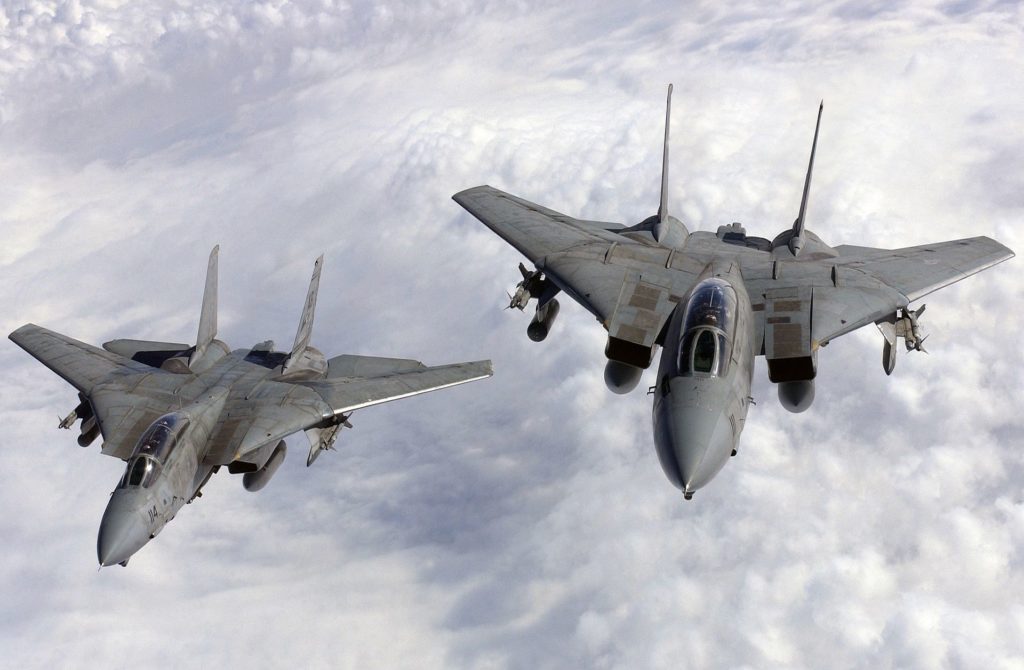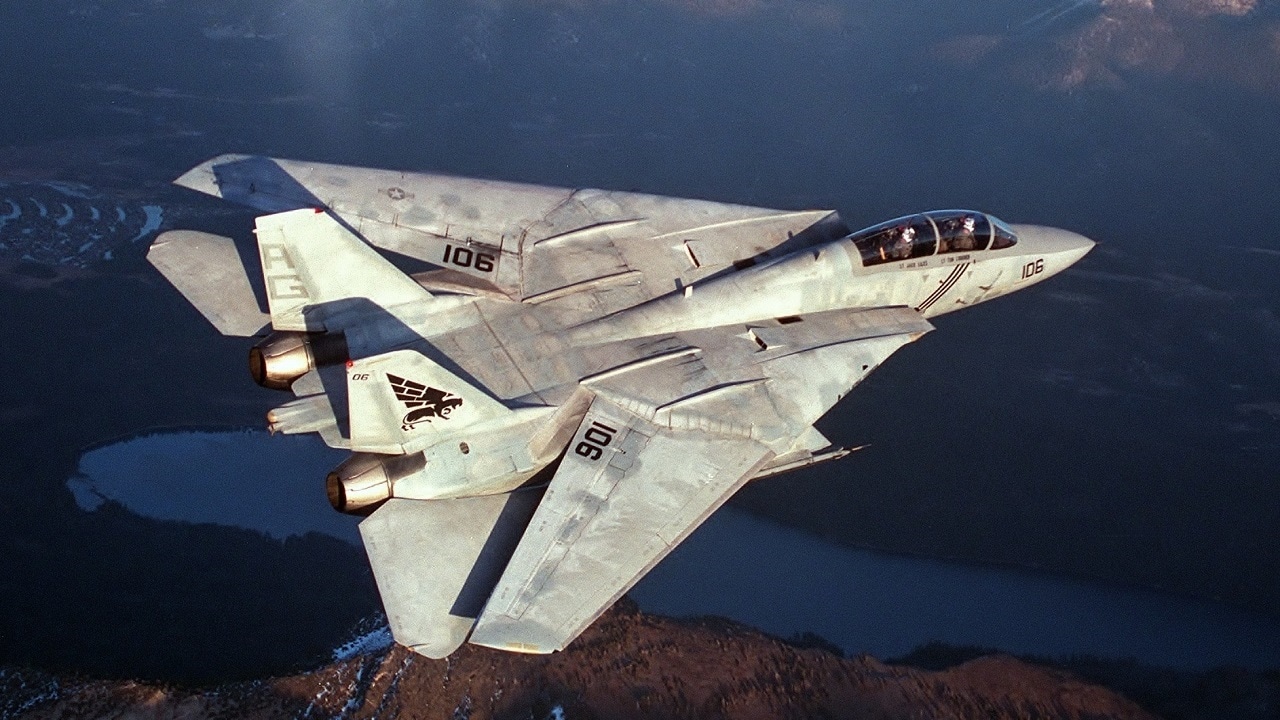The Epic Rivalry: F-14 Tomcat Vs. F-15 Eagle – Redefining Air Superiority
Is there a definitive champion in the realm of fighter jets, or does the true measure of aerial dominance lie in the intricate balance of design, mission, and historical legacy? The enduring debate between the F-14 Tomcat and the F-15 Eagle has captivated aviation enthusiasts for decades, reflecting their unmatched contributions to military aviation. This deep dive explores the core specifications, combat capabilities, and technological milestones that define these iconic aircraft, offering fresh insights for both aficionados and newcomers alike.
The F-14 Tomcat and F-15 Eagle stand as titans of military aviation, each embodying distinct philosophies and missions. The Tomcat, a symbol of naval air superiority, emerged from Grumman Aircraft Engineering Corporation in December 1970, marking the beginning of a new era in fleet defense. Its introduction in 1974 with the U.S. Navy was a response to the growing need for a long-range interceptor capable of countering multiple threats simultaneously. Meanwhile, the F-15 Eagle, a product of McDonnell Douglas (now Boeing), took its inaugural flight in July 1972 and entered service in 1976. Designed as an air superiority fighter, the F-15 quickly set new standards in aerial combat with its powerful engines and advanced avionics.
| Specification | F-14 Tomcat | F-15 Eagle |
|---|---|---|
| Manufacturer | Grumman Aircraft Engineering Corporation | McDonnell Douglas (now Boeing) |
| Length | 62 feet 8 inches (19.1 m) | 63 feet 9 inches (19.4 m) |
| Wingspan | 64 feet 1 inch (19.5 m) | 42 feet 10 inches (13.0 m) |
| Height | 16 feet (4.9 m) | 18 feet 6 inches (5.6 m) |
| Max Speed | Mach 2.34 | Mach 2.5 |
| Range | 1,600 miles (2,575 km) | 2,400 miles (3,860 km) |
| Crew | 2 (Pilot and Radar Intercept Officer) | 1 (Pilot) |
| Primary Role | Fleet Defense, Interception | Air Superiority, Strike (later variants) |
| Noteworthy Missions | Gulf War, Operations in the Balkans | Gulf War, Middle East conflicts |
| Legacy | Iconic status from "Top Gun" | Impressive air-to-air combat record |
| Modern Variants | None (Retired from US service) | F-15E Strike Eagle (Multirole) |
| Reference | Boeing F-15 Eagle | Boeing F-15 Eagle |
The design philosophies behind these aircraft reflect their distinct missions. The F-14 Tomcat's variable-sweep wing was a game-changer, allowing it to optimize performance across a spectrum of flight conditions. This feature enabled the Tomcat to excel in both high-speed interception and low-speed maneuverability, critical for defending carrier battle groups against Soviet bombers and fighters. Conversely, the F-15 Eagle embraced a fixed-wing configuration, prioritizing speed, agility, and reliability. Its design was influenced by the lessons learned during the Vietnam War, emphasizing the need for a dedicated air superiority fighter capable of establishing and maintaining control of the skies.
Performance-wise, the F-15 Eagle held a decisive edge in maximum velocity, capable of reaching Mach 2.5 compared to the F-14's Mach 2.34. This seemingly minor difference could prove pivotal in closing the distance to an adversary or disengaging from a precarious situation. Additionally, the F-15's superior range of 2,400 miles outpaced the F-14's 1,600-mile range, providing the Eagle with a broader operational envelope and enhanced endurance. The payload capacity further underscored the F-15's versatility, with a maximum payload of 23,000 pounds, allowing it to carry a diverse array of ordnance for various missions, including air-to-ground strikes.
Combat capabilities highlight the unique strengths of each aircraft. The F-14 Tomcat's AN/AWG-9 radar system and AIM-54 Phoenix missile enabled it to engage multiple targets simultaneously at long ranges, making it an indispensable asset in fleet defense. The presence of a Radar Intercept Officer (RIO) complemented the pilot's role, managing the complex radar system and weapon selection. In contrast, the F-15 Eagle's arsenal of air-to-air missiles and an internal M61 Vulcan cannon, coupled with advanced radar and electronic warfare systems, made it a formidable opponent in close-quarters combat. The F-15's adaptability to air-to-ground missions expanded its operational value, as evidenced by its success in various conflicts.
Historically, the F-14 Tomcat's cultural significance transcends its combat record. Immortalized in the film "Top Gun," the Tomcat became a symbol of naval aviation and American military prowess. Its dramatic presence, characterized by its sweeping wings, captured the imagination of the public and cemented its legacy. The F-15 Eagle, while less celebrated in popular culture, boasts an unparalleled combat record, achieving a remarkable kill ratio in aerial engagements. Its role in various conflicts solidified its reputation as the preeminent air superiority fighter of its time.
- Planning A Party With Charlie Tips Ideas For An Epic Bash
- Cameron Valentina Eyre Bio Age Boyfriend More Latest Updates
Technological advancements have kept both aircraft relevant in an ever-evolving landscape. The F-14 Tomcat underwent upgrades to its avionics and weapon systems, ensuring its effectiveness in complex combat environments. The F-15 Eagle, too, saw continuous improvements in radar and electronic warfare systems, culminating in the development of the F-15E Strike Eagle, a multi-role variant capable of air-to-ground missions. These innovations underscore the relentless pursuit of maintaining a technological edge in aerial combat.
The F-14 Tomcat and F-15 Eagle represent contrasting yet complementary approaches to military aviation. The Tomcat's variable-sweep wing and long-range missile capabilities defined its role in fleet defense, while the Eagle's speed, agility, and versatile payload established it as a master of air superiority. Both aircraft have left an indelible mark on aviation history, reflecting the complexities and nuances of achieving aerial dominance. Their legacies extend beyond statistics and combat records, embodying the spirit of innovation and excellence that continues to shape the future of military aviation.
In a world where technology and strategy evolve rapidly, the F-14 Tomcat and F-15 Eagle remain emblematic of an era when design and mission dictated the course of aerial combat. Their contributions to military aviation have not only influenced subsequent generations of fighter jets but also inspired a deeper appreciation for the art and science of flight. As the debate over air superiority continues, these two legends of the skies will forever be remembered as pioneers in the pursuit of excellence.



Detail Author:
- Name : Eulah Witting
- Username : maiya76
- Email : freichert@hotmail.com
- Birthdate : 2002-01-15
- Address : 809 Judd Fork Apt. 139 East Abdullah, NC 72289
- Phone : 1-248-503-9000
- Company : Runolfsson Ltd
- Job : Tractor Operator
- Bio : Aperiam et ullam quia unde. Non eveniet libero dolores nulla. Enim laborum dolorem aut et sunt quis laborum non.
Socials
instagram:
- url : https://instagram.com/mhartmann
- username : mhartmann
- bio : Sed aut culpa quo accusantium aut. Ex ab quaerat perferendis ex dolores et.
- followers : 4424
- following : 1906
twitter:
- url : https://twitter.com/mhartmann
- username : mhartmann
- bio : Qui sapiente exercitationem itaque officia voluptatem dolore. Harum consequatur sint est excepturi. Cupiditate enim quidem quibusdam.
- followers : 6073
- following : 453
facebook:
- url : https://facebook.com/marjory_xx
- username : marjory_xx
- bio : Rerum consequatur ad quia omnis adipisci repellendus non.
- followers : 4000
- following : 111
linkedin:
- url : https://linkedin.com/in/mhartmann
- username : mhartmann
- bio : Sunt voluptatem exercitationem repellat quam.
- followers : 5040
- following : 2492